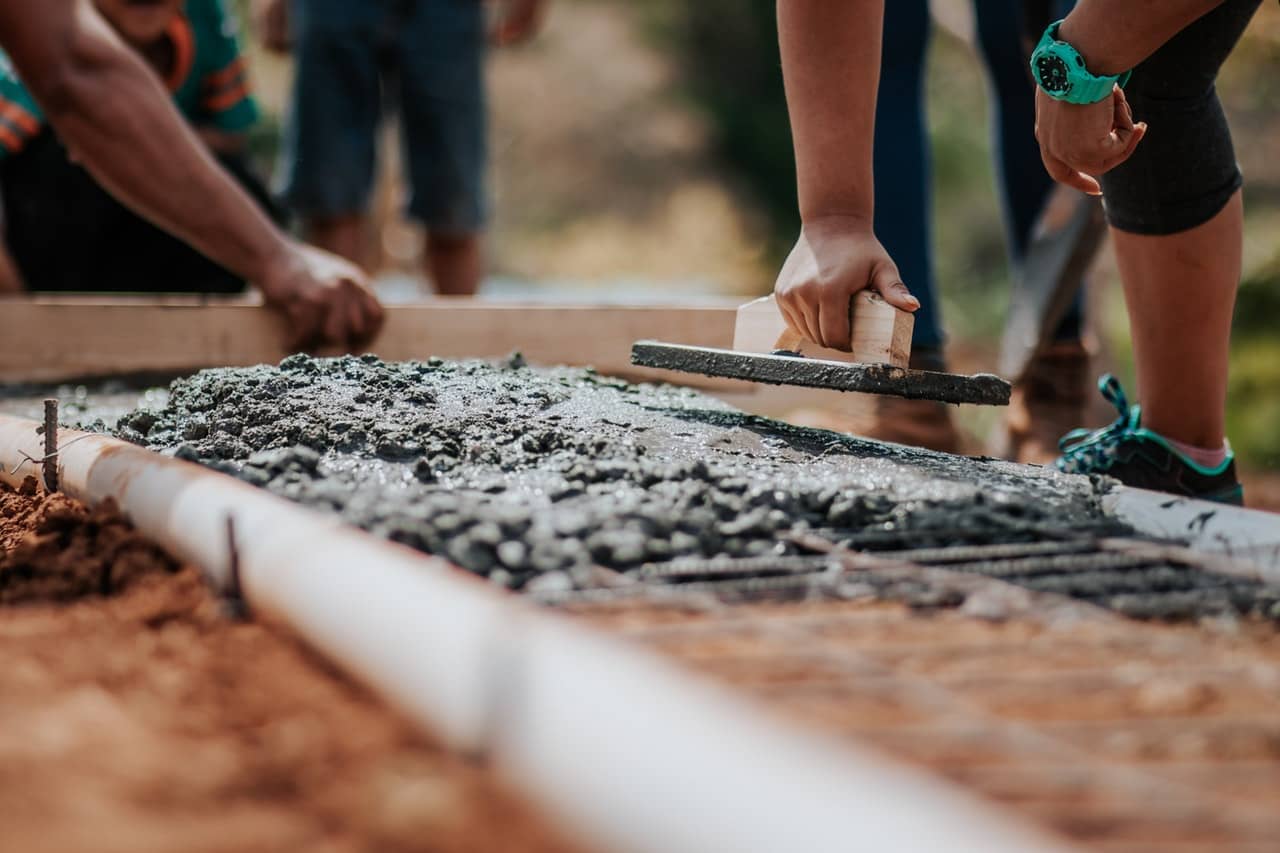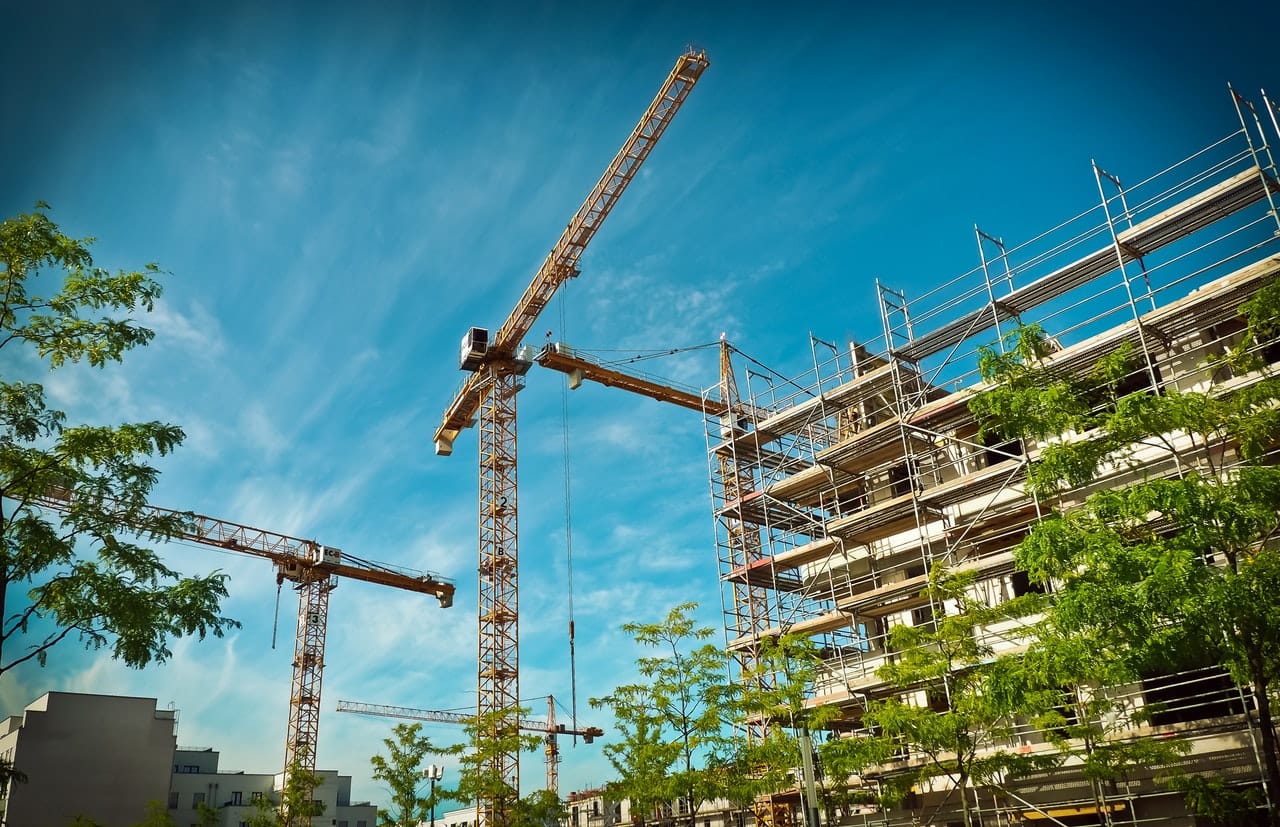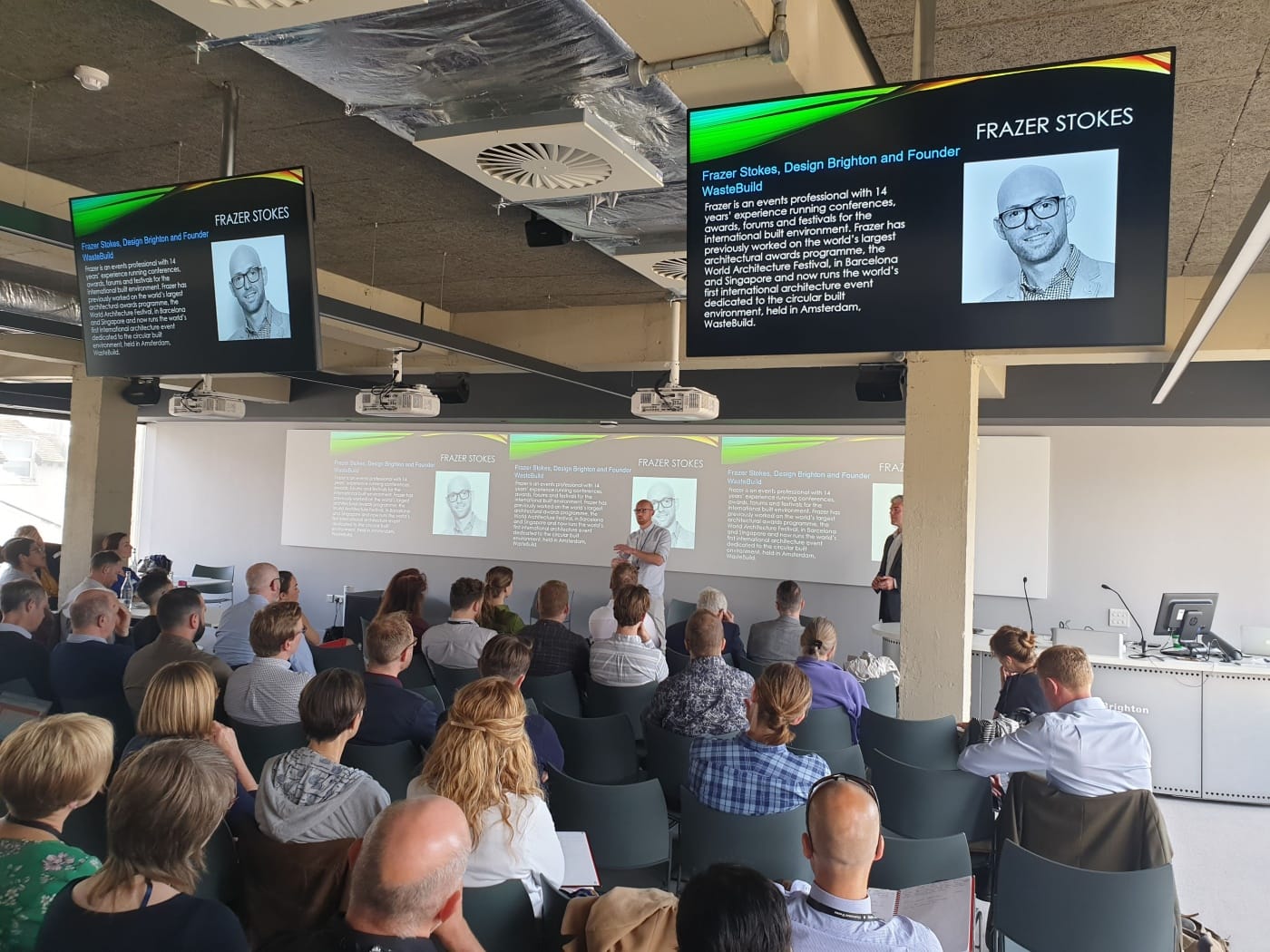A less wasteful, more resourceful construction sector is critical. We spoke with Frazer Stokes, founder of WasteBuild, a new event focused on accelerating the transition to a circular built environment.
Metabolic: Firstly, how do you personally define a circular built environment, and why is it important?
Frazer Stokes: For me, a circular built environment is about thinking about new, different and innovative approaches to our design and construction process. It is not about having all the solutions today but it is about being on a journey towards a circular economy in the years to come. There are clearly only finite raw materials and we cannot continue to consume them in the way we are. There is simply not enough ‘stuff’ to continue with our TAKE-MAKE-WASTE approach. Given the construction industry consumes around 40% – 50% of all raw materials and it creates around 20% of the waste, it is an integral part of any circular economy roadmap and we must start to take action globally now.
M: Could you provide a couple of examples of circular solutions for the construction sector that really excite you?
FS: I think the BAMB 2020 project has done a huge amount for progressing learning around circular construction, as has the GTB Lab‘s circular/reversible building module. And it will be really exciting to see what is to come next from the BAMB team. But there are also real-life projects actually delivering circular developments, in particular, the SUPERLOCAL project in the Parkstad Limberg region of the Netherlands. They are deconstructing an old tower block in modules, then reusing those modules for residential housing on an adjacent site. Really inspirational stuff that demonstrates what we can do already if we just factor circularity into our designs from the outset.
M: Could you tell us a little about your background, and how you came to found WasteBuild?
FS: I have worked on international construction events for most of my career, and it was off the back of a conversation during one of those events, back in 2012, that I first had the idea for what is now WasteBuild. Essentially the conversation was around zero-waste design and build solutions: specifically the notion that we could go a long way to eliminating waste from the construction process by designing projects with deconstruction in mind, and by viewing what waste we do create as in fact a resource for future solutions. It was too early to launch the event back then, but fast forward a few years and more and more architects, engineers, developers and others are looking to incorporate these circular and regenerative ideas into their schemes, and more and more suppliers are developing products and solutions that make it possible. However there is no event where these groups can meet to discuss this specifically, so I thought, maybe now is the time for WasteBuild.
M: For those who don’t know: what is WasteBuild, and what are its key objectives?
FS: WasteBuild itself is a two-day conference and exhibition for the international design and construction community, and all the team talk about, day in and day out is how we can help to accelerate the transition towards a circular built environment – that’s the dream! We’re aiming to do this by being a genuine disruptor, not only for the built environment through showcasing the most innovative thinkers and doers out there, but also for the events space, by targeting – and being vocal about – delivering the first zero-waste event of its kind!

M: You are based in the UK, but have chosen to hold the first WasteBuild event in Amsterdam in December. Why Amsterdam?
FS: Very quickly during my research, it became abundantly clear that The Netherlands, and specifically Amsterdam, was the only place to launch WasteBuild. Practically, Amsterdam is a great host city given the rail (and air) links across Europe, including London with the Eurostar, but also the circular economy roadmap to 2050 is one of the most robust and developed of any country globally. Moreover, international professionals are looking to the Netherlands for leadership and inspiration to make their next project more circular than their last.
M: How is the circular construction landscape looking in the UK, and how does it differ to the Netherlands?
FS: We are a few years behind in the UK, but by looking to The Netherlands, (and elsewhere) learning from what works and also what doesn’t work, we are making progress. One of the major differences is simply around awareness. The general public is just not familiar with the concept of circular construction, we’re too preoccupied with another issue at the moment… but that is one of the things WasteBuild is trying to improve.
M: When you say the UK is “preoccupied”, I take it you mean Brexit of course. Are there effective ways to cut through that noise with circular ideas, or to push for the circular economy to be a part of the new rules and regulations that will need to be developed if the UK does indeed leave the EU?
FS: Yes exactly! It’s interesting, because there are individuals and groups really active and driving the circular economy across the UK and they are really picking up momentum now, there has just not been any coherent government backing or even vocal acknowledgment of the urgency. Part of that lack of coherence is down to the distraction of Brexit but we are just starting to see that changing now and just a few weeks ago the UK government did announce ‘net zero’ targets for 2050. Also at a more local level we are seeing more city areas, including Brighton which is where I am based, putting the circular economy at the heart of their strategy for the next ten-year plan and beyond. Rules and regulations will be a part of that circular push, but the more we can communicate the compelling business case for the circular transition, the more we will be able to cut through that noise. The first step, and most important, is talking about it!

M: A range of speakers are already confirmed for the event – any you’d like to highlight?
FS: Yes we have many speakers confirmed already, there is a full list on the website, with more major names confirming every day. To mention just a couple though, one we have the Danish Architect Kasper Guldager Jensen from 3XN/GXN, global leaders in circular design, construction and research and Kasper himself has been appointed as the Circularity expert and Strategic Advisor to the City of Amsterdam. And two we have arguably the UK’s leading Architect when it comes to circularity, Duncan Baker-Brown from BBM Sustainable Design, who amongst other things has built the Waste House in the centre of Brighton, a permanent building for the University of Brighton made from 90% ‘waste’ (or should I say resources from diverted waste).
M: There will also be an opportunity to exhibit: what kind of organizations are you hoping to attract, and how can they register their interest?
FS: Yes we already have a number of exhibitors confirmed from around the world and of course from The Netherlands, with more signing up every week. Some are major international firms who are showing real leadership by developing circular solutions, which will in time replace their legacy products, but others are small innovative organizations that are genuinely disrupting the market with incredible new products. [Find out more about conference passes and rates here.]
M: What are your plans for WasteBuild beyond the event in December?
FS: The plan is for WasteBuild in Amsterdam to become the annual event for the international circular built environment community to come together to be inspired, share best practice and to do business, and of course, as a result to continue to accelerate our transition towards a circular built environment.
M: Anything else you’d like to point out?
FS: It is super-exciting to be launching WasteBuild this year in Amsterdam and also, of course, is a real challenge. It would not have been possible to even get this far, without our supporters who include Circle Economy, Copper 8, C Creators, C2C Bouwgroep, the World Architecture Festival and of course Metabolic. The vision and advice these organisations continue to provide is instrumental to the launch year and I hope will continue to grow along with WasteBuild in future years and along with the growth of the international circular construction industry.
To find out more about WasteBuild, visit the event website. To learn a bit more about circular construction and how it works, check out the resources below:






